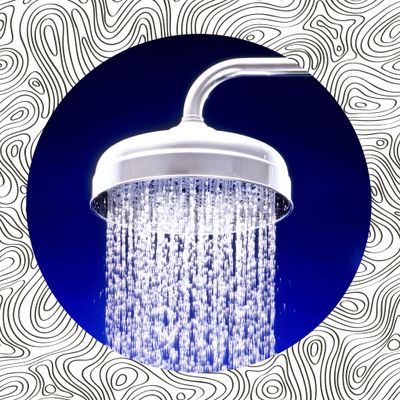
A friend of mine regularly takes 30-second cold showers at the end of her regular showers. When she and her boyfriend are fighting, one will often lightly suggest that the other take “a cold rinse.” She’s been telling me for years that it acts as a mood reset.
The health benefits of taking cold showers, and of visiting hot saunas, are well documented: Hot-and-cold hydrotherapy can help with depression, high blood pressure, pain, and circulatory problems, and it stimulates the vagus nerve, which promotes feelings of well-being. Water therapy is also generally associated with an overall reduction in sickness. But as much as I read about it, actually taking a cold rinse never gets easier. It feels great afterward, but the stories in which people describe the week or month they spent taking cold showers have always seemed both impressive and baffling: Are we not trying the same cold water?
A new book referred to a device that makes cold-water bathing sound marginally more inviting. In The Nature Cure: A Doctor’s Guide to the Science of Natural Medicine, Dr. Andreas Michalsen, head physician of the Department of Naturopathy at the Immanuel Hospital Berlin, writes about something called a “Scotch hose” so frequently that I figured I’d missed the part where he explained what it was. Eventually I realized that at its simplest, a Scotch hose is basically a handheld showerhead, with spa variations in which an attendant sprays the recipient from several feet away.
I enjoyed the way Michalsen described his own daily Scotch-hose routine, administered solo: “I start by directing a jet of cold water at my outer right foot,” he writes. “Then I move upward to the groin, and back down again on the inside of the leg; after that I repeat the process with my left foot and left leg.” Then he sprays his arms, chest, face, and back. It’s uncomfortable to direct cold water onto the back and genitals, he writes, but “after a short while, you’re going to look forward to the invigorating and refreshing effect.” Hm. When he’s tired or not feeling up to it, however, Michalsen sticks to a shorter treatment, “in which I only direct the water up to my knees (this, by the way, also helps with headaches).” Elsewhere in the book, Michalsen advocates for and explains the science behind leeching, fasting, meditation, yoga, and vegetarianism. I loved it.
I’ve been trying the legs-only routine on and off for the past few months. I have a hand-held shower at home, but I’ve been too lazy to take it off the mount, so instead I extend my shins and feet under the cold spray. It’s not pleasant, but afterward my skin feels like it’s throbbing in a “glowing” way. I also like the idea that cold-water exposure might be making me tougher, calmer, and more resilient, which a recent Elemental story suggests can result from physical challenges. Every so often, I get the courage to go full body for a minute. The first five seconds remain terrible. I’m not sure I’ll ever look forward to it, but it’s definitely a distraction.
The book doesn’t spell out why they’re called Scotch hoses (rather than German or French hoses), but they seem to be better known in Europe, and my guess is that the name has something to do with “Scottish showers” — a colloquialism for cold showers. This in turn seems to have come from the term “Scottish shower baths,” which has been around since at least the 1860s and appears to mean any kind of bath that involves alternating hot and cold water. Apparently it’s so named after a Scottish (?) impulse to save money on water heating.

